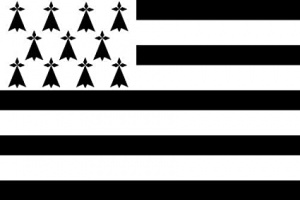Difference between revisions of "Language/Breton/Grammar/Negation"
m (Quick edit) |
m (Quick edit) |
||
| Line 67: | Line 67: | ||
{{Breton-Page-Bottom}} | {{Breton-Page-Bottom}} | ||
==Videos== | |||
===Saving the Breton Language / Sauver le breton=== | |||
<youtube>https://www.youtube.com/watch?v=K1TpNY86i7U</youtube> | |||
===The Sound of the Breton Language=== | |||
<youtube>https://www.youtube.com/watch?v=7XeGjnOTOx8</youtube> | |||
===Breton: an endangered language=== | |||
<youtube>https://www.youtube.com/watch?v=PvBaZfPKZ94</youtube> | |||
Revision as of 22:42, 21 February 2023
Hi Breton learners! 😊
In this lesson, we will learn about the basics of negation in Breton. We will look at how to form negative sentences and how to use them in everyday conversations.
Negation is an important part of any language, and Breton is no exception. In Breton, there are two main ways to form a negative sentence: using the particle "na" or using the verb "bezañ". Let's take a look at each one in more detail.
Using the Particle "Na"
The particle "na" is used to form a negative sentence in Breton. It is placed before the verb in the sentence. For example:
| Breton | Pronunciation | English Translation |
|---|---|---|
| Na zeskann ket | /na zeʃkɑ̃n ke/ | He doesn't learn |
| Na vez ket gwelet | /na vez ke gwele/ | He isn't seen |
| Na vez ket kavet | /na vez ke kave/ | It isn't found |
| Na vez ket klevet | /na vez ke klev/ | It isn't heard |
| Na vez ket lennet | /na vez ke lene/ | It isn't read |
It is important to note that the particle "na" is not used with the verb "kaout" (to have). Instead, the verb "bezañ" is used.
Using the Verb "Bezañ"
The verb "bezañ" (to be) is used to form a negative sentence in Breton. It is placed before the verb in the sentence. For example:
| Breton | Pronunciation | English Translation |
|---|---|---|
| N'eo ket desket | /neo ke deʃke/ | He hasn't learned |
| N'eo ket gwelet | /neo ke gwele/ | He isn't seen |
| N'eo ket kavet | /neo ke kave/ | It isn't found |
| N'eo ket klevet | /neo ke klev/ | It isn't heard |
| N'eo ket lennet | /neo ke lene/ | It isn't read |
It is important to note that the verb "bezañ" is used with the verb "kaout" (to have). For example:
| Breton | Pronunciation | English Translation |
|---|---|---|
| N'eus ket anezhañ | /neus ke aneʒã/ | He doesn't have it |
| N'eus ket anezho | /neus ke aneʒo/ | They don't have it |
| N'eus ket anezhe | /neus ke aneʒe/ | She doesn't have it |
| N'eus ket anezon | /neus ke anezõ/ | You don't have it |
| N'eus ket anezomp | /neus ke anezõp/ | We don't have it |
Now that you know the basics of negation in Breton, you can start using it in your conversations. Practice makes perfect, so make sure to practice as much as you can!
➡ If you have any questions, please ask them in the comments section below.
➡ Feel free to edit this wiki page if you think it can be improved. 😎
